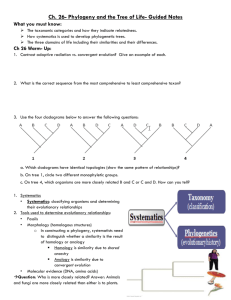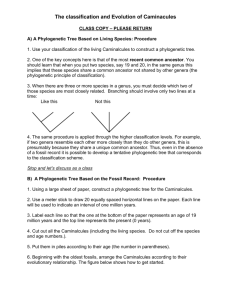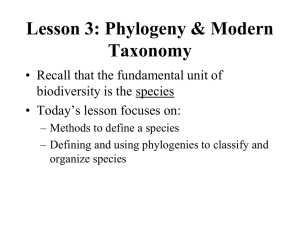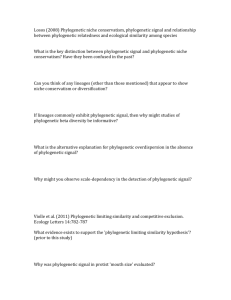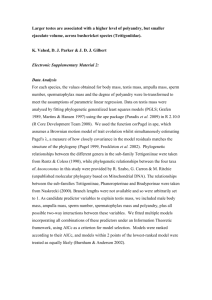ddi12188-sup-0004-SuppInfoTextS1
advertisement
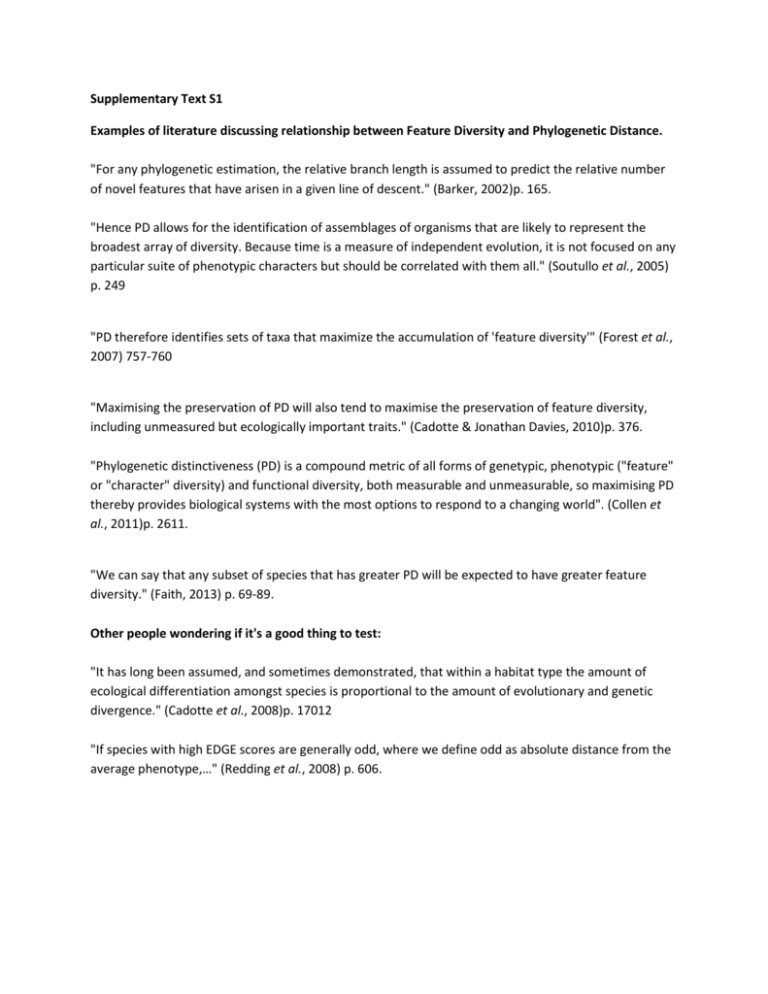
Supplementary Text S1 Examples of literature discussing relationship between Feature Diversity and Phylogenetic Distance. "For any phylogenetic estimation, the relative branch length is assumed to predict the relative number of novel features that have arisen in a given line of descent." (Barker, 2002)p. 165. "Hence PD allows for the identification of assemblages of organisms that are likely to represent the broadest array of diversity. Because time is a measure of independent evolution, it is not focused on any particular suite of phenotypic characters but should be correlated with them all." (Soutullo et al., 2005) p. 249 "PD therefore identifies sets of taxa that maximize the accumulation of 'feature diversity'" (Forest et al., 2007) 757-760 "Maximising the preservation of PD will also tend to maximise the preservation of feature diversity, including unmeasured but ecologically important traits." (Cadotte & Jonathan Davies, 2010)p. 376. "Phylogenetic distinctiveness (PD) is a compound metric of all forms of genetypic, phenotypic ("feature" or "character" diversity) and functional diversity, both measurable and unmeasurable, so maximising PD thereby provides biological systems with the most options to respond to a changing world". (Collen et al., 2011)p. 2611. "We can say that any subset of species that has greater PD will be expected to have greater feature diversity." (Faith, 2013) p. 69-89. Other people wondering if it's a good thing to test: "It has long been assumed, and sometimes demonstrated, that within a habitat type the amount of ecological differentiation amongst species is proportional to the amount of evolutionary and genetic divergence." (Cadotte et al., 2008)p. 17012 "If species with high EDGE scores are generally odd, where we define odd as absolute distance from the average phenotype,…" (Redding et al., 2008) p. 606. Barker, G.M. (2002) Phylogenetic diversity: a quantitative framework for measurement of priority and achievement in biodiversity conservation. Biological Journal of the Linnean Society, 76, 165-194. Cadotte, M.W. & Jonathan Davies, T. (2010) Rarest of the rare: advances in combining evolutionary distinctiveness and scarcity to inform conservation at biogeographical scales. Diversity and Distributions, 16, 376-385. Cadotte, M.W., Cardinale, B.J. & Oakley, T.H. (2008) Evolutionary history and the effect of biodiversity on plant productivity. Proceedings of the National Academy of Sciences, 105, 17012-17017. Collen, B., Turvey, S.T., Waterman, C., Meredith, H.M.R., Kuhn, T.S., Baillie, J.E.M. & Isaac, N.J.B. (2011) Investing in evolutionary history: implementing a phylogenetic approach for mammal conservation. Philosophical Transactions of the Royal Society B: Biological Sciences, 366, 26112622. Faith, D.P. (2013) Biodiversity and evolutionary history: useful extensions of the PD phylogenetic diversity assessment framework. Annals of the New York Academy of Sciences, 1289, 69-89. Forest, F., Grenyer, R., Rouget, M., Davies, T.J., Cowling, R.M., D.P., F., Balmford, A., Manning, J.C., Proches, S., van der Bank, M., Reeves, G., Hedderson, T.A.J. & Savolainen, V. (2007) Preserving the evolutionary potential of floras in biodiversity hotspots. Nature, 445, 757-760. Redding, D.W., Hartmann, K., Mimoto, A., Bokal, D., Devos, M. & Mooers, A.O. (2008) Evolutionarily distinct species capture more phylogenetic diversity than expected. . Journal of Theoretical Biology, 251, 606-615. Soutullo, A., Dodsworth, S., Heard, S.B. & Mooers, A.O. (2005) Distribution and correlates of carnivore phylogenetic diversity across the Americas. Animal Conservation, 8, 249-258.






